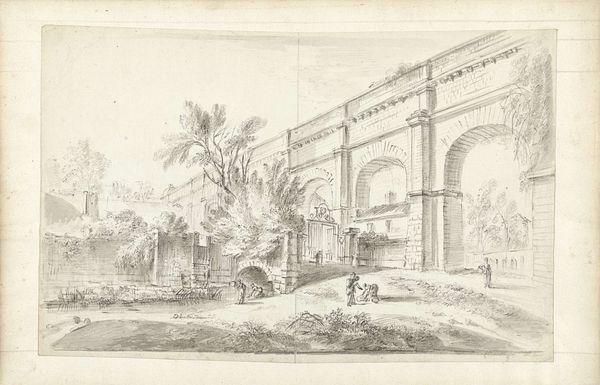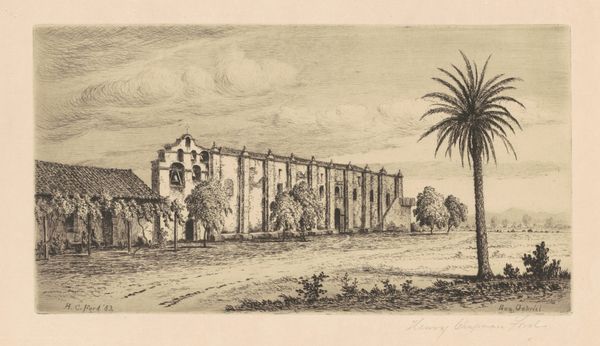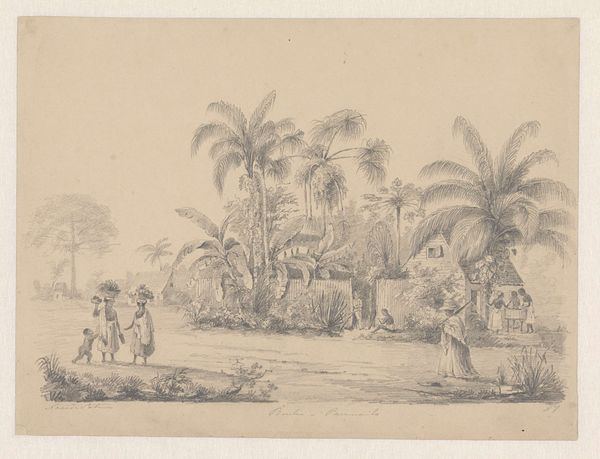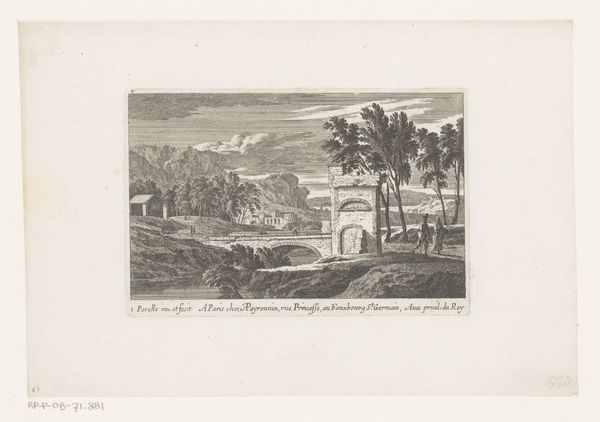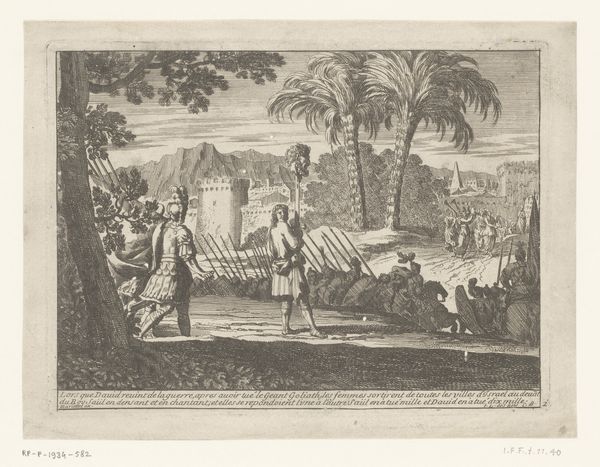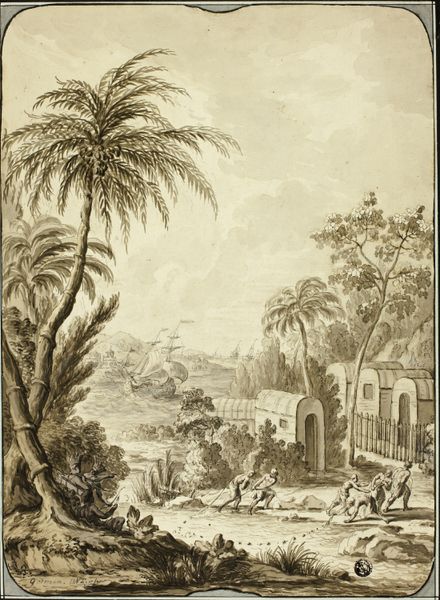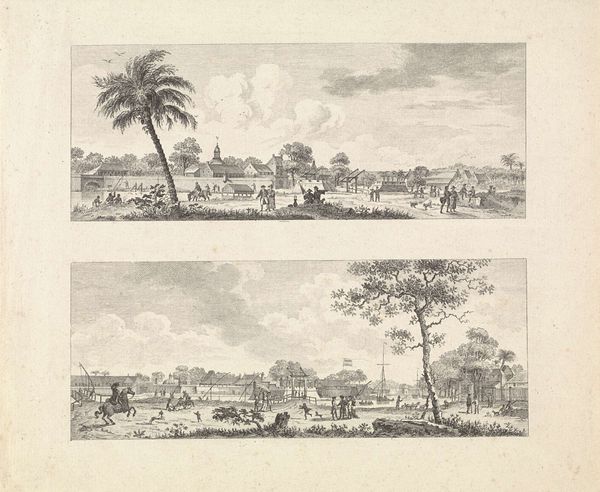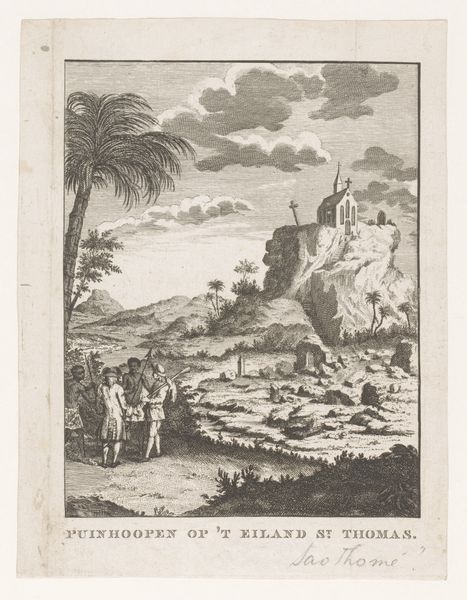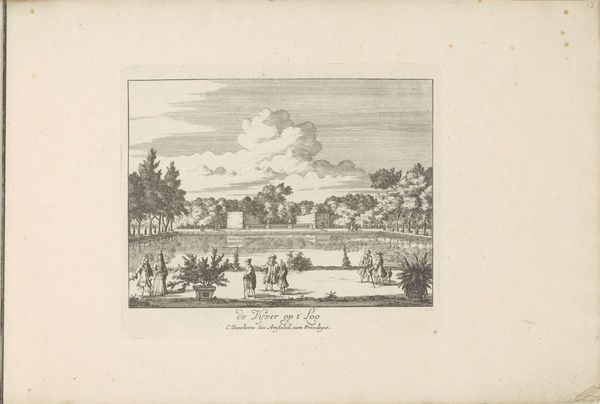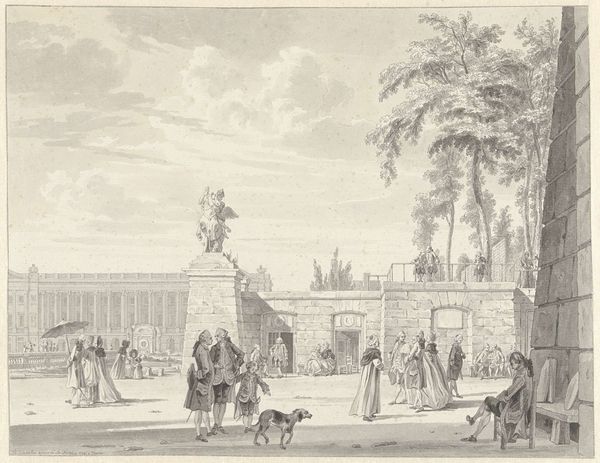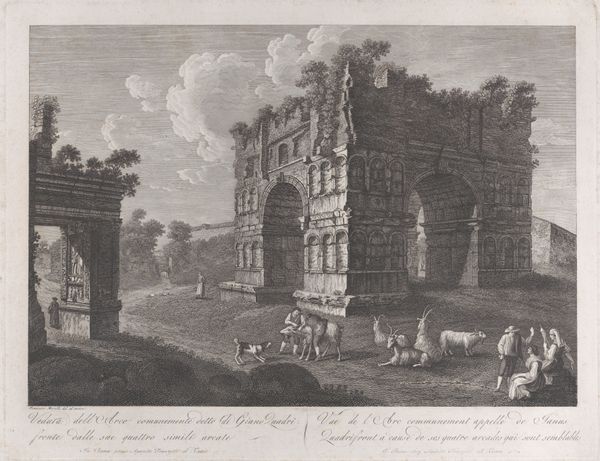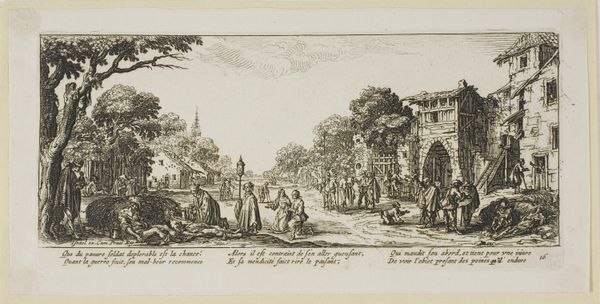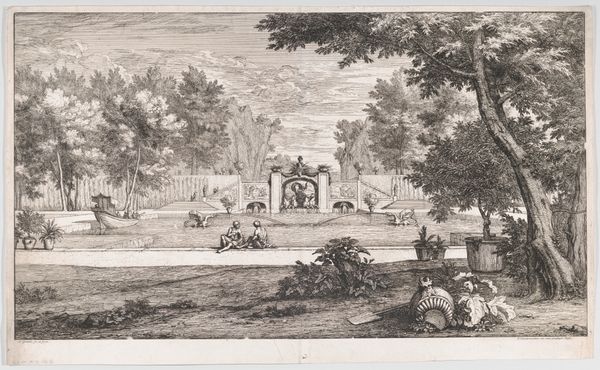
tempera, print, engraving
#
tempera
# print
#
asian-art
#
landscape
#
engraving
Dimensions: height 230 mm, width 292 mm
Copyright: Rijks Museum: Open Domain
Curator: Here we have "Bathers in a Pond Near a Temple," an engraving and tempera print from sometime between 1751 and 1816, made by Reinier Vinkeles, part of the Rijksmuseum collection. The landscape is populated with figures bathing, praying, and working around a large temple complex. Editor: It's strikingly serene. The monochrome palette lends it an antique feel, while the busy scene it depicts suggests community and a relaxed pace of life centered around the water. I’m particularly drawn to the architecture—that temple looks imposing yet harmonious within its lush surroundings. Curator: The architectural elements and the depiction of bathing rituals offer a glimpse into the social and cultural practices of the time and the function of such communal spaces. Consider also that Vinkeles, while Dutch, created a vision of an 'exotic' other; one needs to consider the power dynamics in such representation. What perspectives are centered? What might be obscured or misrepresented through a colonial lens? Editor: That colonial aspect is crucial. How does Vinkeles' gaze frame these individuals? Are they reduced to anonymous figures within a picturesque landscape, or is there an attempt at nuanced portrayal? The artistic value and social context are clearly intertwined. Curator: Precisely. It raises important questions about representation and the exoticization of other cultures. Furthermore, note how the social activity around the pool, framed by the imposing temple structure, illustrates the intertwining of everyday life with religious practice. This brings forth narratives related to orientalism and exoticism often associated with colonialism. The print serves as a starting point to discuss gender, class, race, and the power structures operating through that intersection. Editor: Examining it through this lens enriches our understanding. I started out seeing simple beauty, but you have helped show how such landscapes could reflect unequal dynamics. The engraving now resonates with broader historical implications. Curator: Indeed. We need to understand that, despite any appealing artistic rendering, artworks like this can be products and reflectors of particular social perspectives which need deconstructing to better assess social injustice and the politics of representation.
Comments
No comments
Be the first to comment and join the conversation on the ultimate creative platform.
